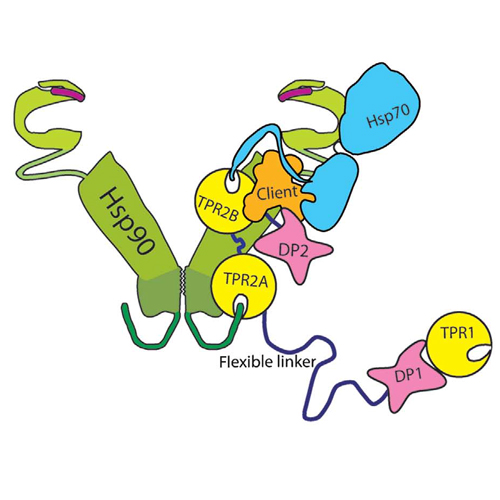The architecture of functional modules in the Hsp90 co-chaperone Sti1/Hop
06-Jan-2012
The EMBO Journal, 2012, doi:10.1038/emboj.2011.472, published on 06.01.2012
The EMBO Journal, online article
The EMBO Journal, online article
Sti1/Hop is a modular protein required for the transfer of client proteins from the Hsp70 to the Hsp90 chaperone system in eukaryotes. It binds Hsp70 and Hsp90 simultaneously via TPR (tetratricopeptide repeat) domains. Sti1/Hop contains three TPR domains (TPR1, TPR2A and TPR2B) and two domains of unknown structure (DP1 and DP2). We show that TPR2A is the high affinity Hsp90- binding site and TPR1 and TPR2B bind Hsp70 with moderate affinity. The DP domains exhibit highly homologous a-helical folds as determined by NMR. These, and especially DP2, are important for client activation in vivo. The core module of Sti1 for Hsp90 inhibition is the TPR2A– TPR2B segment. In the crystal structure, the two TPR domains are connected via a rigid linker orienting their peptide-binding sites in opposite directions and allowing the simultaneous binding of TPR2A to the Hsp90 C-terminal domain and of TPR2B to Hsp70. Both domains also interact with the Hsp90 middle domain. The accessory TPR1–DP1 module may serve as an Hsp70–client delivery system for the TPR2A–TPR2B–DP2 segment, which is required for client activation in vivo.











